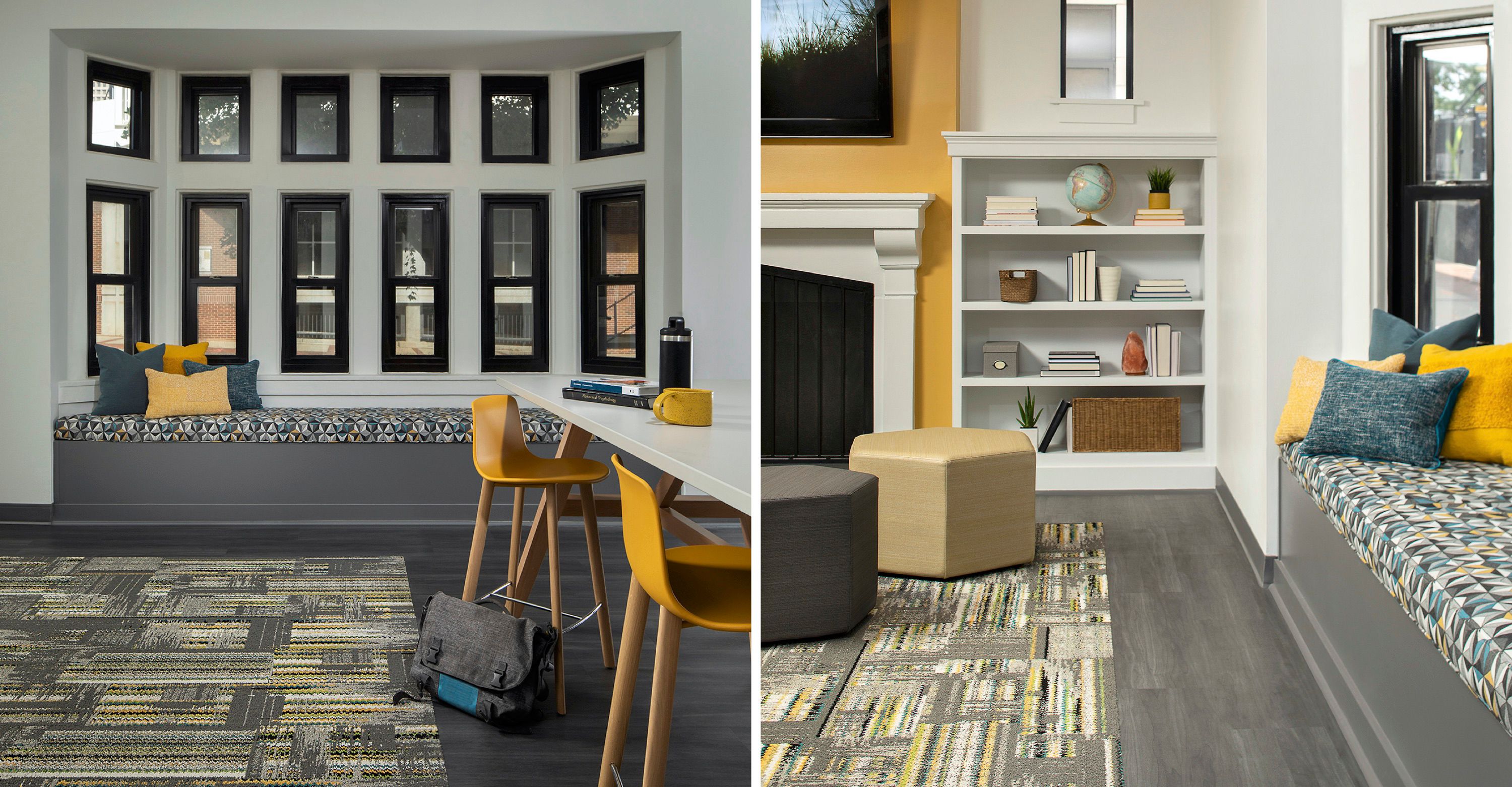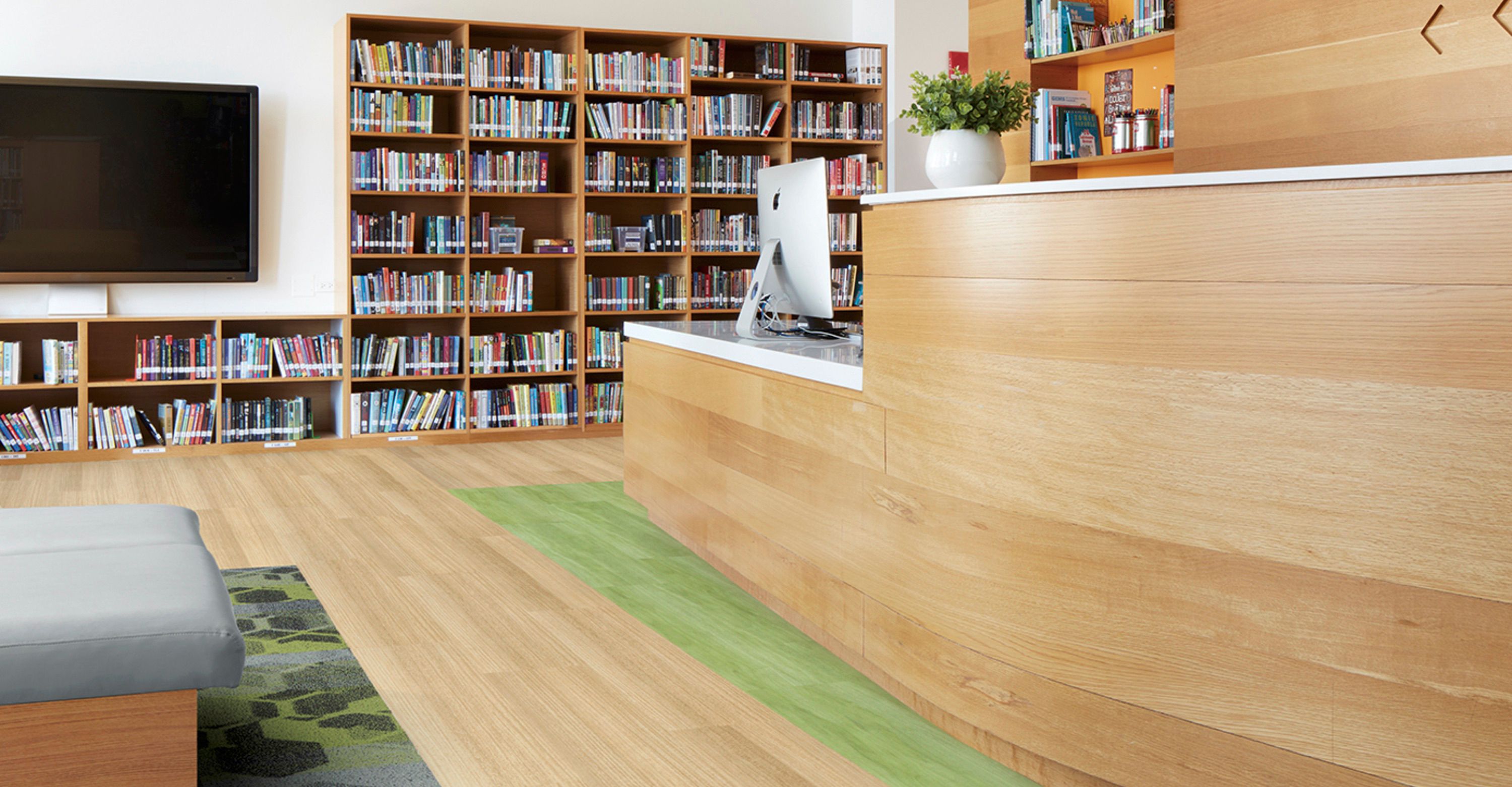Editor’s Note: This piece originally appeared in Learning by Design’s Summer 2022 issue as part of a content partnership with the title, “Perspectives on Change.”
So far in the 21st Century, change has been the critical constant. Within the overlapping orders of education and design, the pace of change has accelerated so consistently that the only way to prepare for tomorrow is to get ready for the day after. Learning By Design is pleased to present a threefold conversation on change and what design can do to make educational spaces more adaptable and resilient.
Facilities Perspective
Polly Patton, RID, LEED AP, AUID – Senior Interior Designer, Georgia Institute of Technology
“Right now, at Georgia Tech, we are experiencing the highest volume of facility improvement projects across campus we have ever seen,” says Patton, who has been with Georgia Tech for nearly 15 years. As an interior designer charged with defining the spaces students and faculty experience as a backdrop to learning, Patton enjoys the constant problem-solving.
“Pre-pandemic users wanted spaces that were open and collaborative. Now, we’re getting more requests for separate, private spaces. There is a push to increase on-campus enrollment and also to accommodate more virtual learning. We are preparing young people to enter the workforce of tomorrow, which is also rapidly changing. There is a lot of push and pull in what we are asked to do. Products and design solutions must be built for change because it’s coming no matter what we build.”
Patton points out that adaptability in educational design means more than sustainable products. It means choices that can stand the test of time and the sway of society.
“Thinking about aesthetics, it’s important not to choose colors or patterns that are trendy,” says Patton of the fear of redesigning spaces simply because they are dated. Instead, building a design language based on biophilia is a better starting point that is unlikely to get old. Nature never goes out of style.
“In terms of adaptability and resiliency, for me, it’s about how we can make products that are not only made sustainably but stay out of the landfill. For example, carpet and flooring that are easily reconfigured or used elsewhere, durable, and at least carbon neutral,” Patton continues. “These choices impact people’s wellbeing and attitude toward life in real time. It’s very easy to overlook how important design really is to human health and wellbeing.”

Project shown: Harris Residence Hall, Georgia Institute of Technology – Photography by Nathan Bolster
Design Perspective
Megan Walker, IIDA, LEED AP ID+C – Senior Interior Designer, EUA
“In the last 20 years or so, the process of education has shifted from lecture-based teaching to interactive, peer-to-peer, project-based learning,” says Walker, an Associate with architecture, interiors, and engineering firm, EUA. “Good design always puts a priority on users. In education, good design contributes to positive behaviors and learning outcomes.”
Walker says the change in teaching and learning strategies is largely driven by changes in the workforce expectations of employers. It’s a ripple effect.
“Employers want creative, ambitious thinkers, who come to the table with ideas and solutions,” shares Walker. “We’re no longer educating for a do-as-you’re-told, passive workforce. The goal in education is a holistic thinker who can make a positive contribution to whatever company or culture they are a part of.”
In response to the ambition that architecture be adaptable and resilient, Walker shares that rethinking how space is designed begins with rethinking how space is used.
“Adaptability means designing spaces that have multiple functions and transition seamlessly throughout the day from one use to another. Not every classroom needs to be the same size, the same materials, or even the same design. Moveable glass walls, exterior access, and modular materials like flooring all contribute to a building’s ability to change over time with less cost, disruption, and effort than schools built 30 years ago.”
Though symbiotic, adaptability and resiliency aren’t always easily reconciled.
“Resiliency means enduring years of constant use, and also being able to recover, from disruptive events, be it a pandemic or a local tragedy,” says Walker. “Resiliency is the ability to heal. More and more, design has a chance to contribute positively to human health and wellness. Strategies like daylighting, access to nature, multi-functionality, and products like carpet tiles that are carbon neutral and now even carbon negative, are all things that make the experience of space regenerative and supportive of our whole selves.”
Product Perspective
Chip DeGrace – Director, Design Purpose, Interface
“Today, design is modeling nature, which is inherently both adaptable and resilient,” says DeGrace. As a manufacturer of high-performance flooring systems for commercial buildings of every sort including K–12, higher education, and corporate, DeGrace shares that Interface prioritizes design in everything they do. “The user is always at the core of great design, and the user is a moving target. The ability for a product to support a wide range of uses in a wide range of environments is a start. But the material composition of the product itself also needs to be malleable, reusable, or open to change so that its usefulness is extended.”
Because Interface serves many markets, they have helped transmit workplace design logic to classroom-focused solutions in response to shifting teaching styles through the years.
“In education, we think about how to create environments that give students the flexibility to study at a rhythm that is suited for them individually within the context of a space designed for all of them collectively,” says DeGrace of the fundamental tension between adaptability and resiliency. “Flooring systems can facilitate a visual segmentation of space and offer a change in color, tactility, and acoustic absorption that can provide an oasis for a challenged student.“
While a user’s needs for a space can evolve over time, that’s not the only type of change Interface considers when developing its flooring solutions. DeGrace says “The biggest change the world is facing is climate change” and while “our intent is to lead by example, our objective is to go beyond sustainable and to become restorative. At Interface, our mission is to reverse global warming, and I believe we can.”
It is understood that buildings account for about 40 percent of annual fossil fuel carbon dioxide emissions (C02), which contributes significantly to global warming.
“The issue in the building industry is embodied carbon, which is the overall carbon impact of a building before it becomes operational,” says DeGrace. “Interface takes a leadership role in producing flooring solutions that create a low-carbon footprint and in some cases contribute to a carbon negative footprint.”
With the big agenda set, DeGrace and the Interface team still have to execute the day-to-day details of serving a global marketplace through relationships with architects, builders, and owners.
Asked what the most important thing he would want people to know about designing for change, DeGrace is proud to think of the company he works for as a change agent.
“Climate change is the issue of our time. At Interface, we don’t see this as a negative. We see an opportunity for leadership. Design is optimistic, and based on facts. The world isn’t perfect. We believe there is a better way, and these times demand it.”

One response to “Perspectives on Change in Education”
Absolutely agree, Honestly, in the past few years, we can feel the difference more obvious.